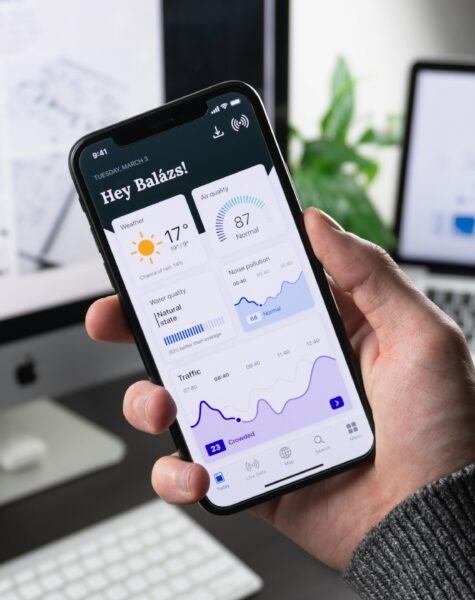Transformative Mobile Applications for Modern Living
Mobile app development is the act or process by which a mobile app is developed for mobile device, such as personal digital assistants, enterprise digital assistants or mobile phones. These applications can be pre-installed on phones during manufacturing platforms, or delivered as web applications using server-side or client-side processing (e.g., JavaScript) to provide an “application-like” experience within a Web browser Application software developers alsomust consider a long array of screen sizes, hardware specifications, and configurations because of intense competition in mobile software and changes within each of the platforms. Mobile app development has been steadily growing, in revenues and jobs created.
One of the defining features of mobile applications is their on-the-go accessibility. Users can access information, services, and entertainment anytime, anywhere, as long as they have their mobile devices with them. This flexibility has transformed how businesses interact with customers, providing opportunities for seamless engagement and real-time interactions.
Capitalizing on the ubiquity of mobile devices, these applications provide users with the flexibility to access information
Mobile applications benefit from regular updates that not only introduce new features
Mobile applications implement robust security measures, including encryption, secure authentication


Integration
Notifications
Improvements
Integration is a pivotal aspect of both desktop and mobile applications, facilitating seamless connectivity and collaboration between different systems or services. In the context of applications, integration refers to the ability to interact with and leverage data or functionalities from other applications or platforms. This interconnectedness streamlines workflows, enhances user experiences, and maximizes the overall efficiency of the digital ecosystem.
For both desktop and mobile applications, integration often involves compatibility with various third-party services, APIs (Application Programming Interfaces), and data sources. This interoperability enables users to access a broader range of features or information without the need to switch between multiple applications. In the business environment, integration between applications supports the flow of data across departments, ensuring that information is consistent and up-to-date throughout the organization.
Push notifications have become a cornerstone of mobile application engagement, serving as a powerful tool to keep users informed, engaged, and connected. These notifications, delivered directly to a user’s mobile device, enable applications to reach users in real-time with updates, personalized content, and relevant alerts. One of the key strengths of push notifications is their ability to break through the noise and capture immediate attention, fostering a dynamic and interactive relationship between the application and its users.
Mobile applications strategically use push notifications to provide timely information, such as news updates, special promotions, or personalized recommendations. This instant communication not only enhances user engagement but also serves as a valuable tool for retention, keeping users actively involved with the application.
Continuous updates and improvements are essential components of both desktop and mobile applications, ensuring that users benefit from the latest features, security enhancements, and optimal performance. Developers regularly release updates to address bugs, enhance functionality, and adapt to evolving user needs and technological advancements.
In the realm of desktop applications, updates often bring new capabilities, improved user interfaces, and compatibility enhancements. Users can expect a more refined experience with each update, as developers respond to user feedback and stay abreast of industry trends. Additionally, desktop application updates frequently include patches to address security vulnerabilities, bolstering the overall resilience of the software against potential threats.
Contact
- Suite # B2 1st Floor, Alam Shah Bukhari, Block 19, Gulistan-e-Johar, Karachi, Pakistan, Karachi, Sindh PK
- +92-332-3173538
- yncpakistan@gmail.com
Brochures
View our 2020 Medical prospectus of
brochure for an easy to read guide on
all of the services offer.
Download Brochure
Characteristics



